Nginx For Beginners
Introduction
Introduction to Nginx
What Is NGINX?
NGINX is a high-performance web server first released over 20 years ago. It’s available in two editions: the open source Community Edition and the commercial NGINX Plus. NGINX powers static content delivery, load balancing, reverse proxy, and more—across Linux, macOS, and Windows.

Cross-Platform Support
NGINX overcomes the scalability and performance bottlenecks of legacy web servers. It installs easily on all major operating systems and delivers consistent throughput under heavy load.
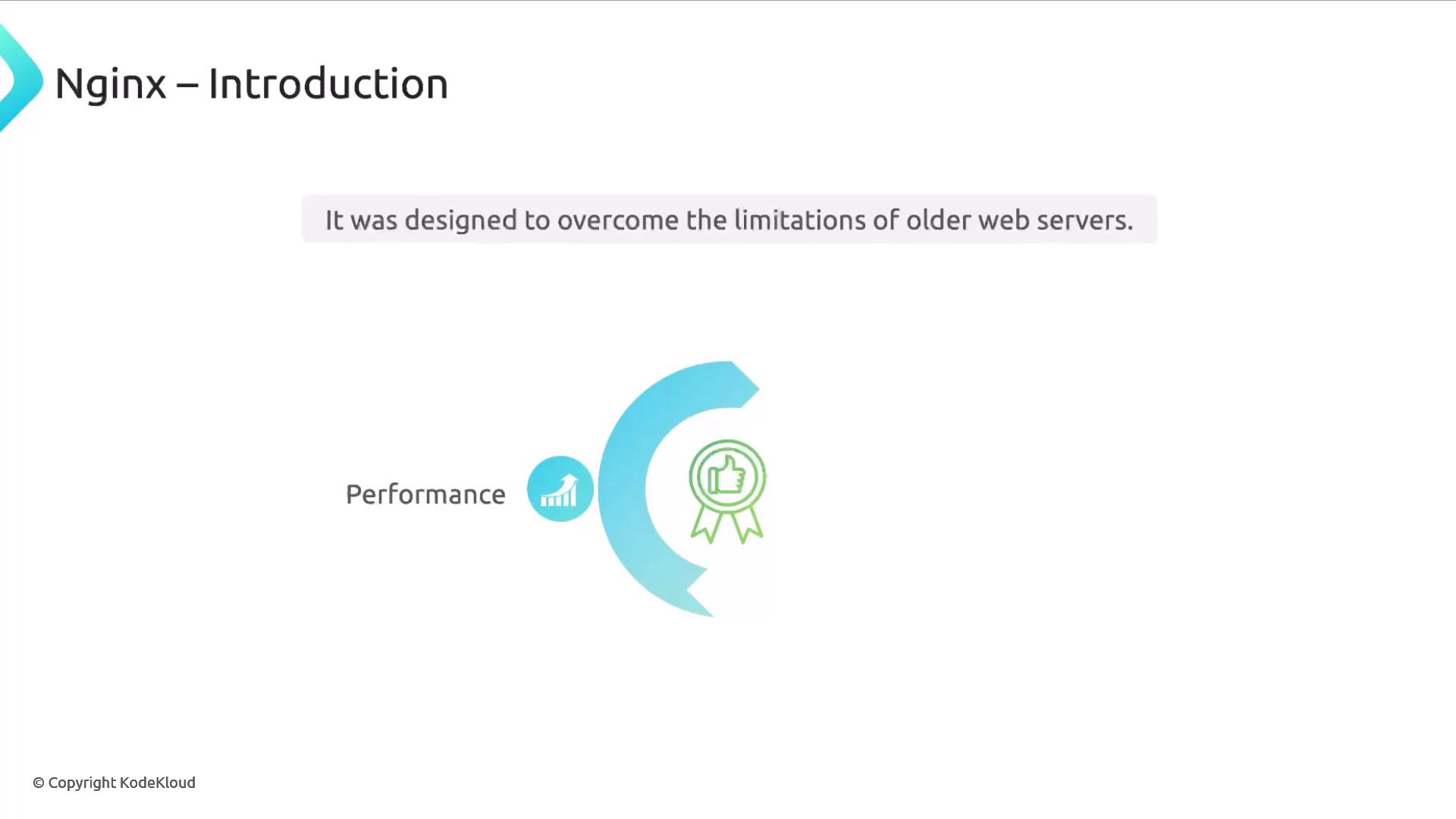
Historical Context
Originally created to challenge Apache HTTP Server and Microsoft Internet Information Services (IIS), NGINX quickly gained traction thanks to its lightweight, asynchronous design.

Asynchronous, Event-Driven Architecture
One of NGINX’s key innovations is handling 10,000+ concurrent connections with minimal overhead. This makes it ideal for serving static assets—HTML, images, audio, and video—more efficiently than traditional, process-based servers.
Note
NGINX processes multiple client requests within a single worker process using non-blocking I/O.
| Feature | NGINX | Apache |
|---|---|---|
| Architecture | Asynchronous, event-driven | Process/thread-based |
| Max. concurrent connections | ≥10,000 | Varies, lower throughput |
| CPU & memory usage | Low | Higher |
| Static content performance | Excellent | Good |
Recent benchmarks show NGINX can handle up to four times as many connections as Apache, with lower latency and reduced resource consumption.
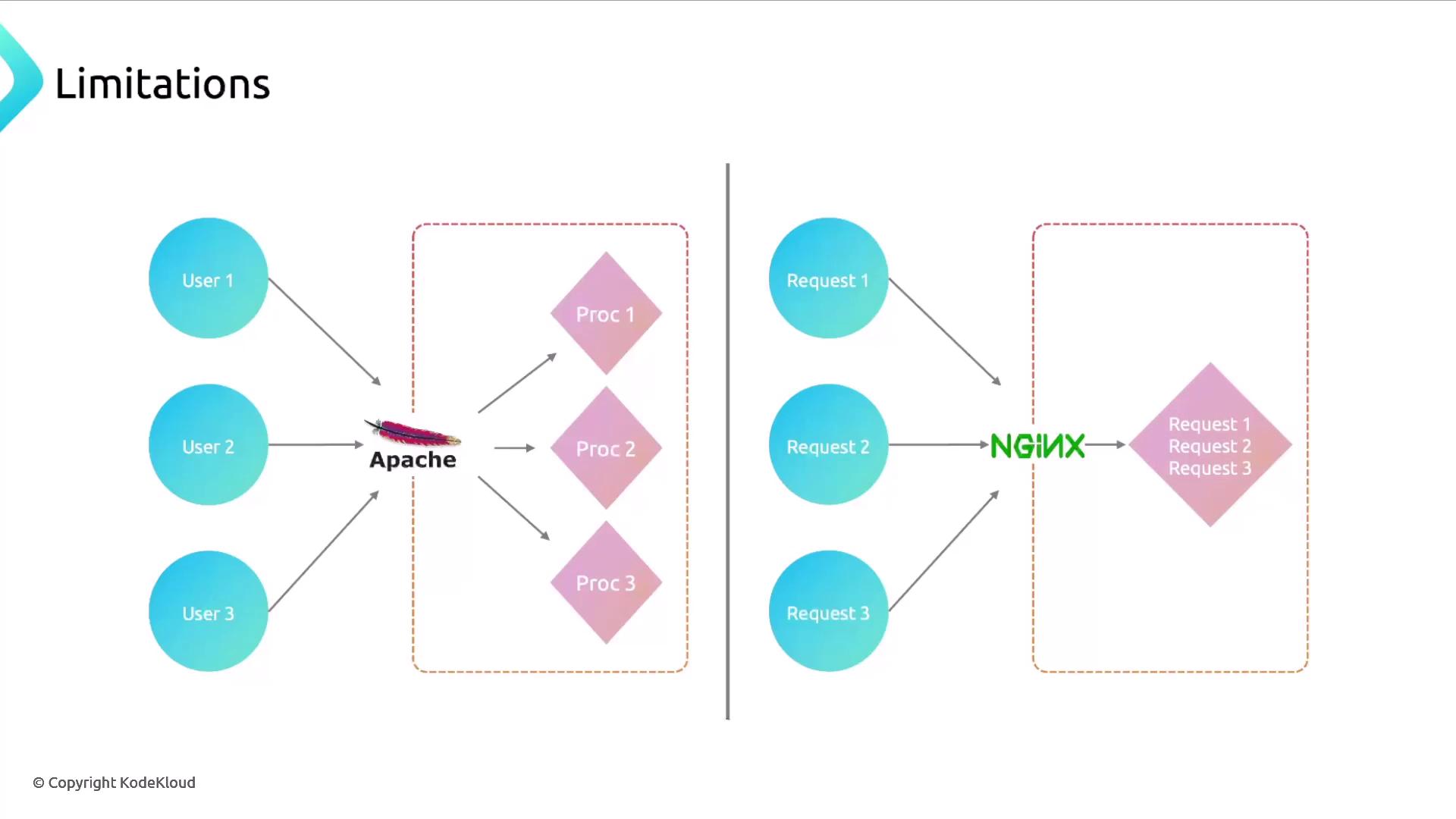
NGINX Editions
NGINX is distributed in two main editions:
| Edition | Key Features | Support | Download URL |
|---|---|---|---|
| Community (Open Source) | Core HTTP, reverse proxy, load balancing | Community forum | https://nginx.org/download |
| NGINX Plus (Commercial) | Advanced modules, dashboard, WAF, 24×7 support | Paid subscription | https://nginx.com/products/nginx-plus |
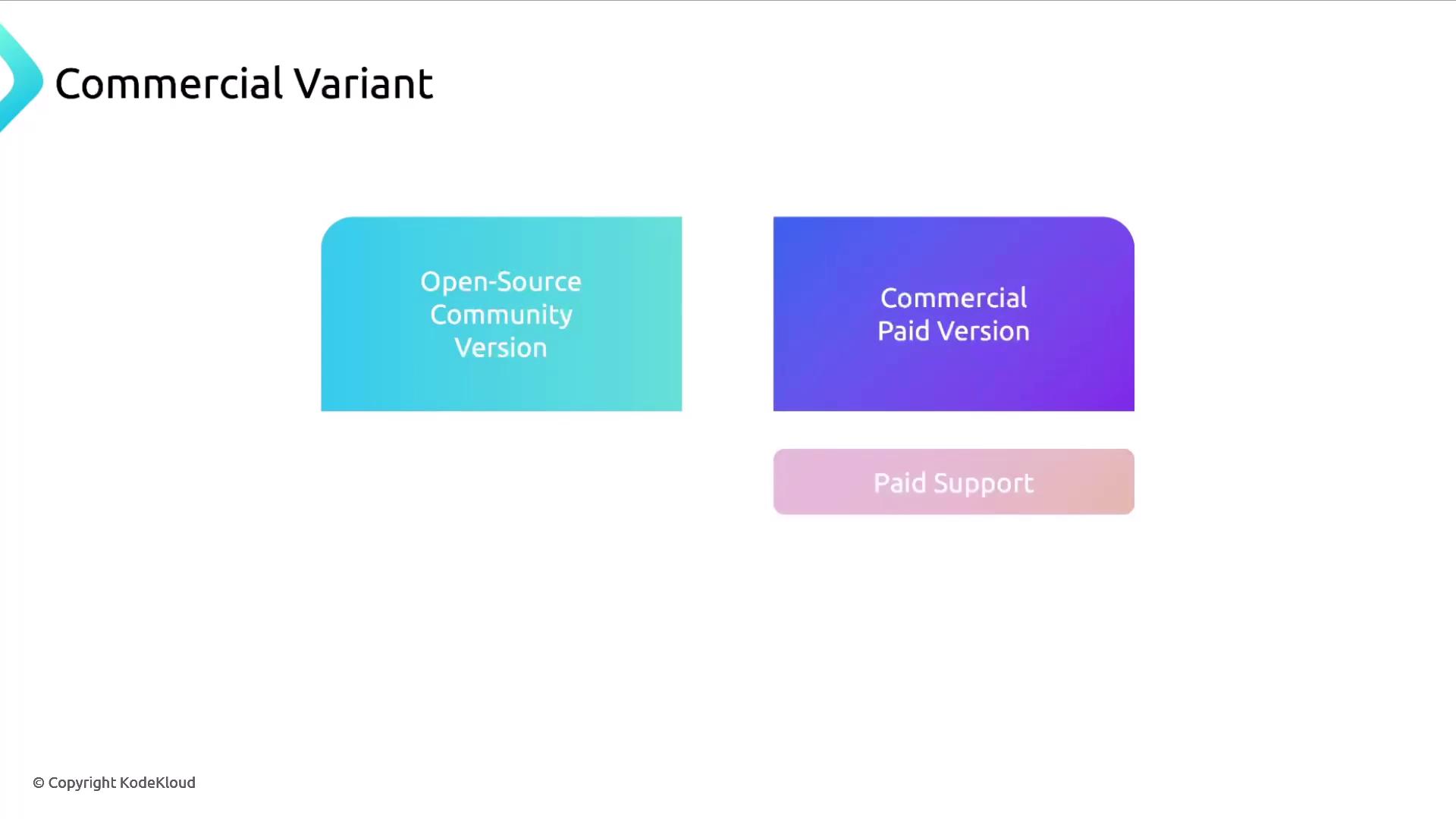
Warning
Check the licensing and support terms before deploying NGINX Plus in production environments.
Official Download Sites
For the open source release, visit nginx.org. To learn about NGINX Plus, head to nginx.com.
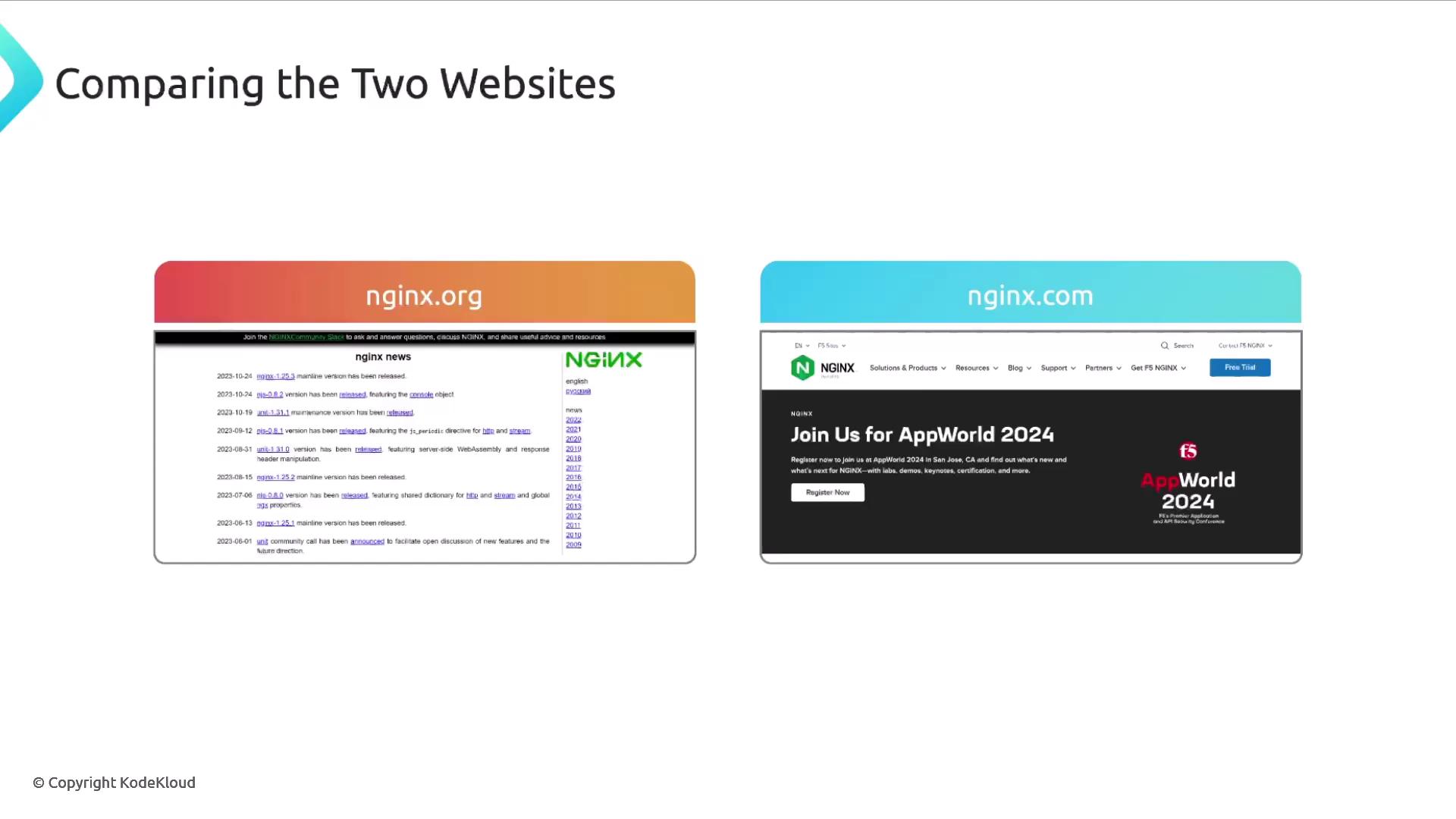
Market Share & Adoption
According to a June 2024 survey, NGINX holds 21% market share among web servers—and 32% when including OpenResty, an enhanced NGINX distribution. It ranks second only to Cloudflare in the top million sites and leads in overall domains and compute infrastructure.
Combined, NGINX and OpenResty power roughly two-thirds of all Internet domains. Major organizations such as GitHub, Cloudflare, LinkedIn, Microsoft, and Netflix rely on NGINX for reliable, scalable performance.
| Web Server | Market Share¹ |
|---|---|
| Cloudflare | 34% |
| NGINX | 21% |
| OpenResty | 11% |
| Others | 34% |
¹ June 2024 survey data
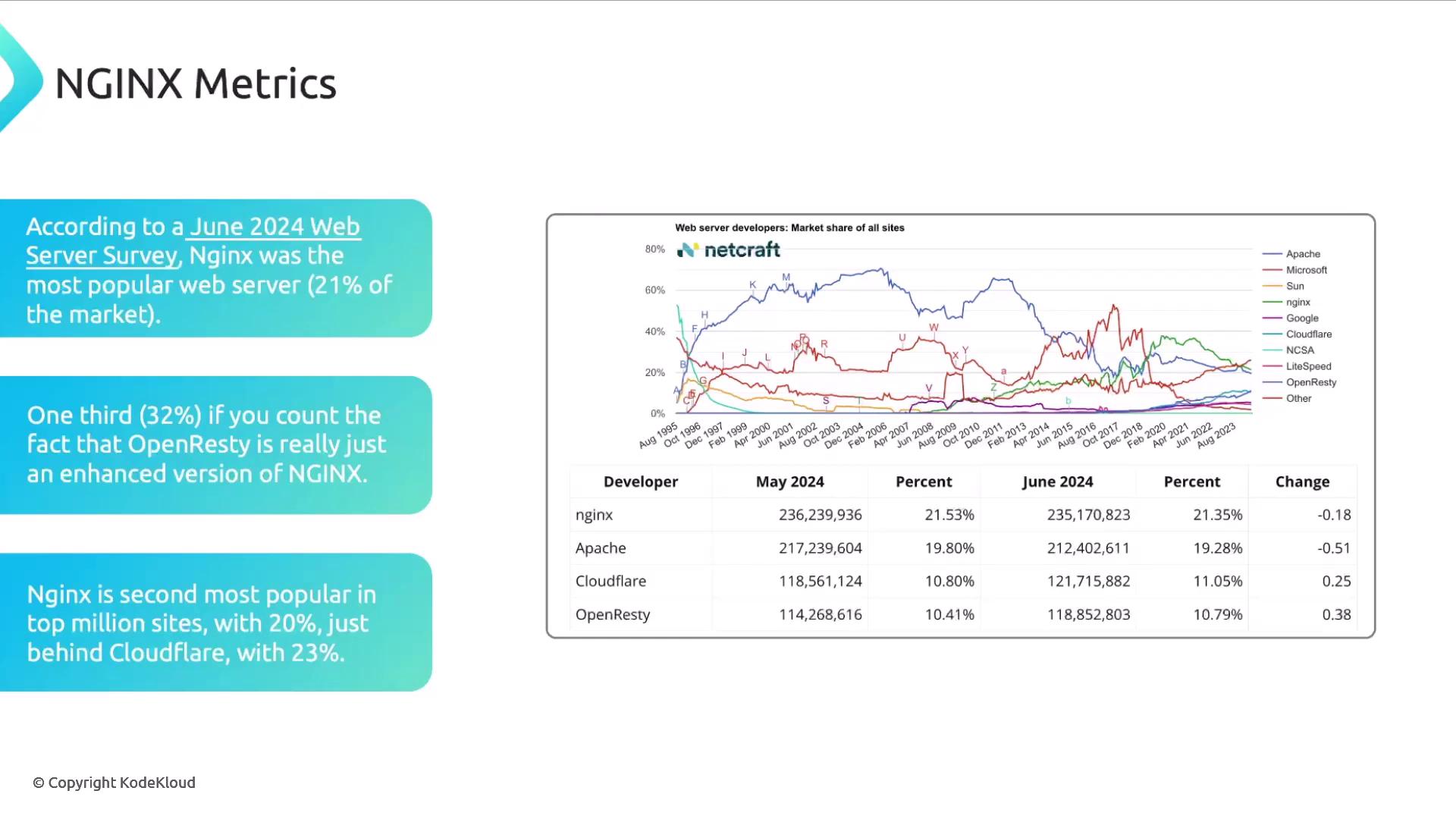
Up next: a deep dive into the NGINX architecture, configuration files, and core modules.
Links and References
- Official NGINX Documentation: https://nginx.org/en/docs/
- NGINX Plus Overview: https://nginx.com/products/nginx-plus/
- OpenResty: https://openresty.org/en/
Watch Video
Watch video content